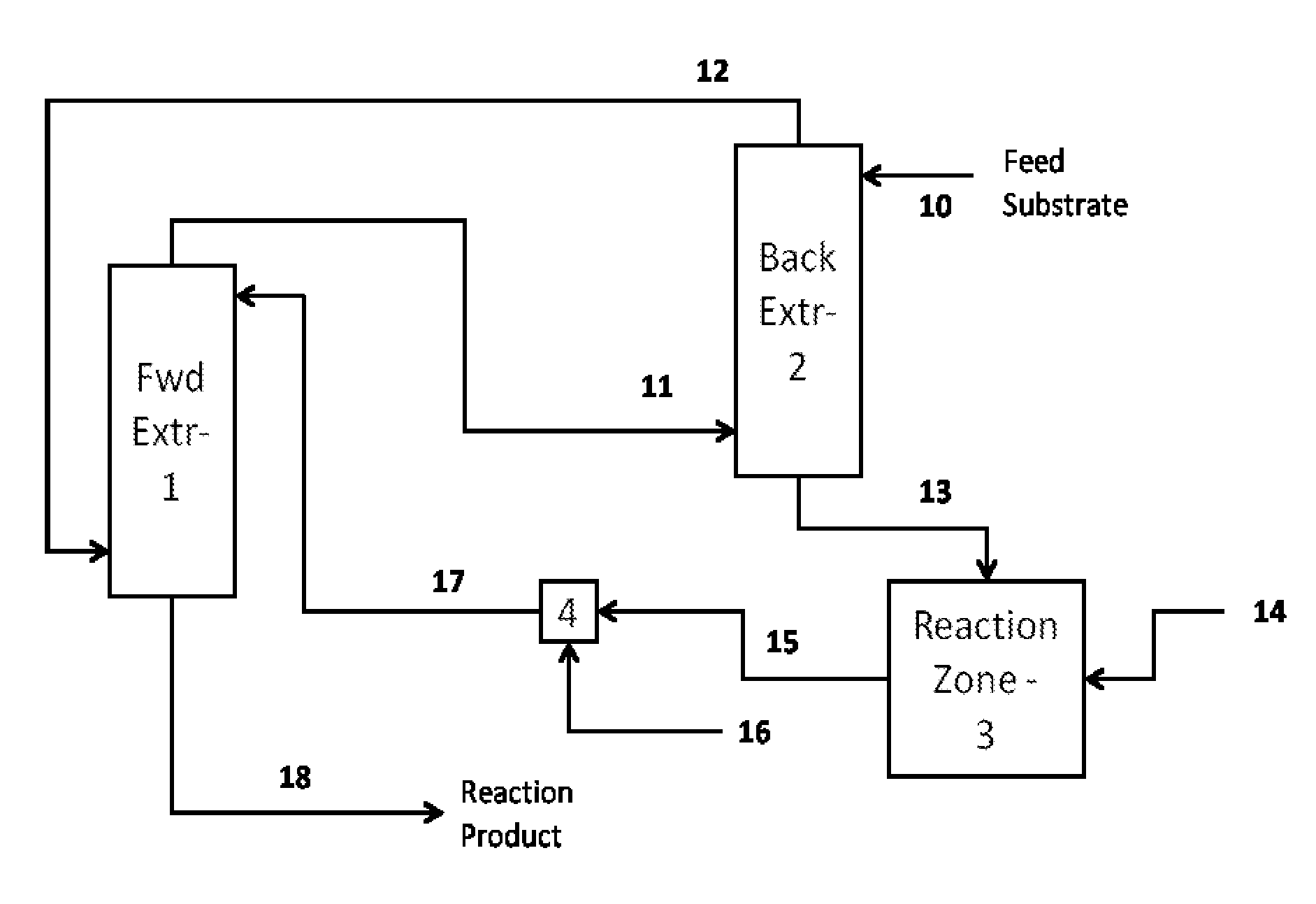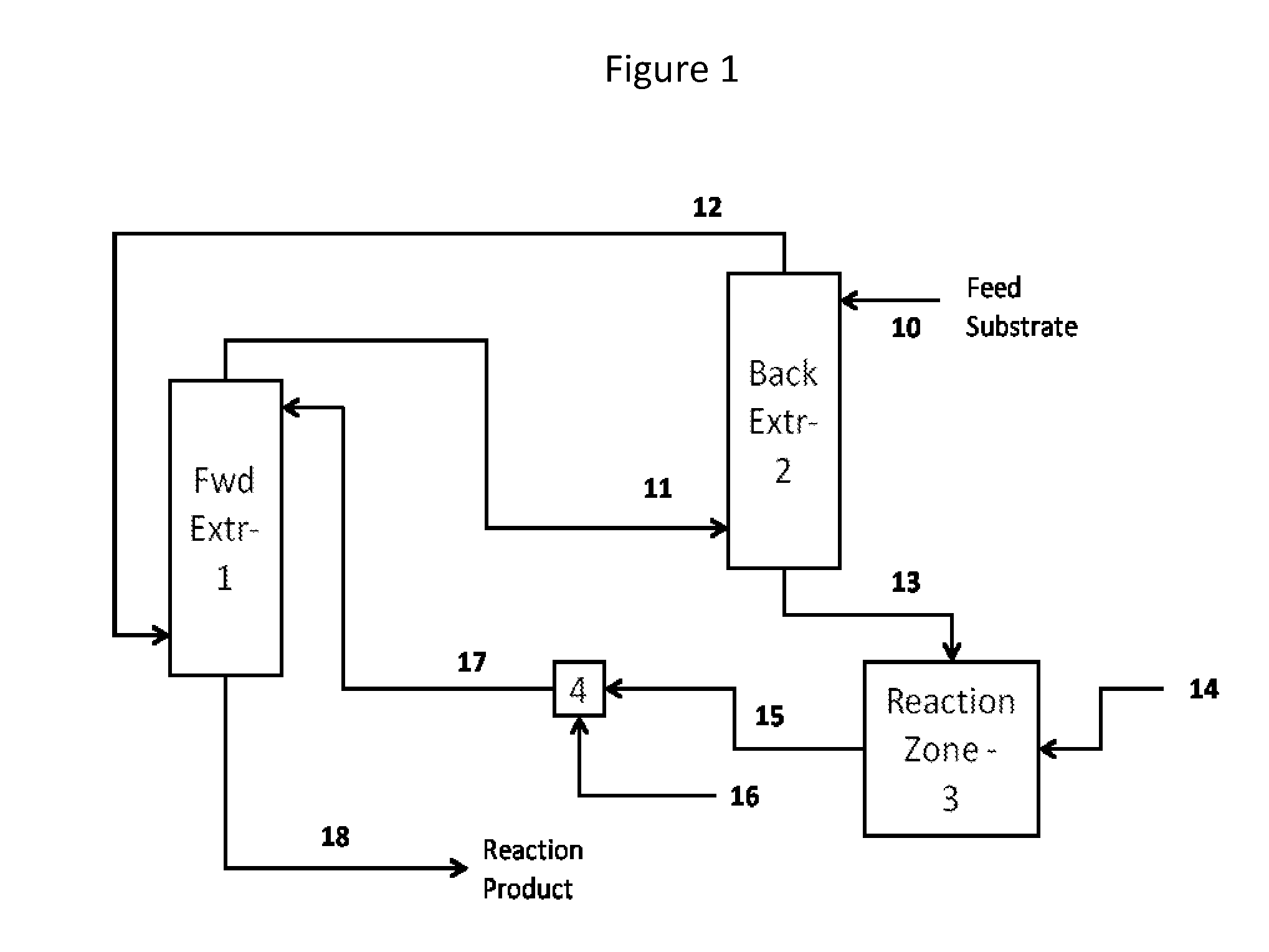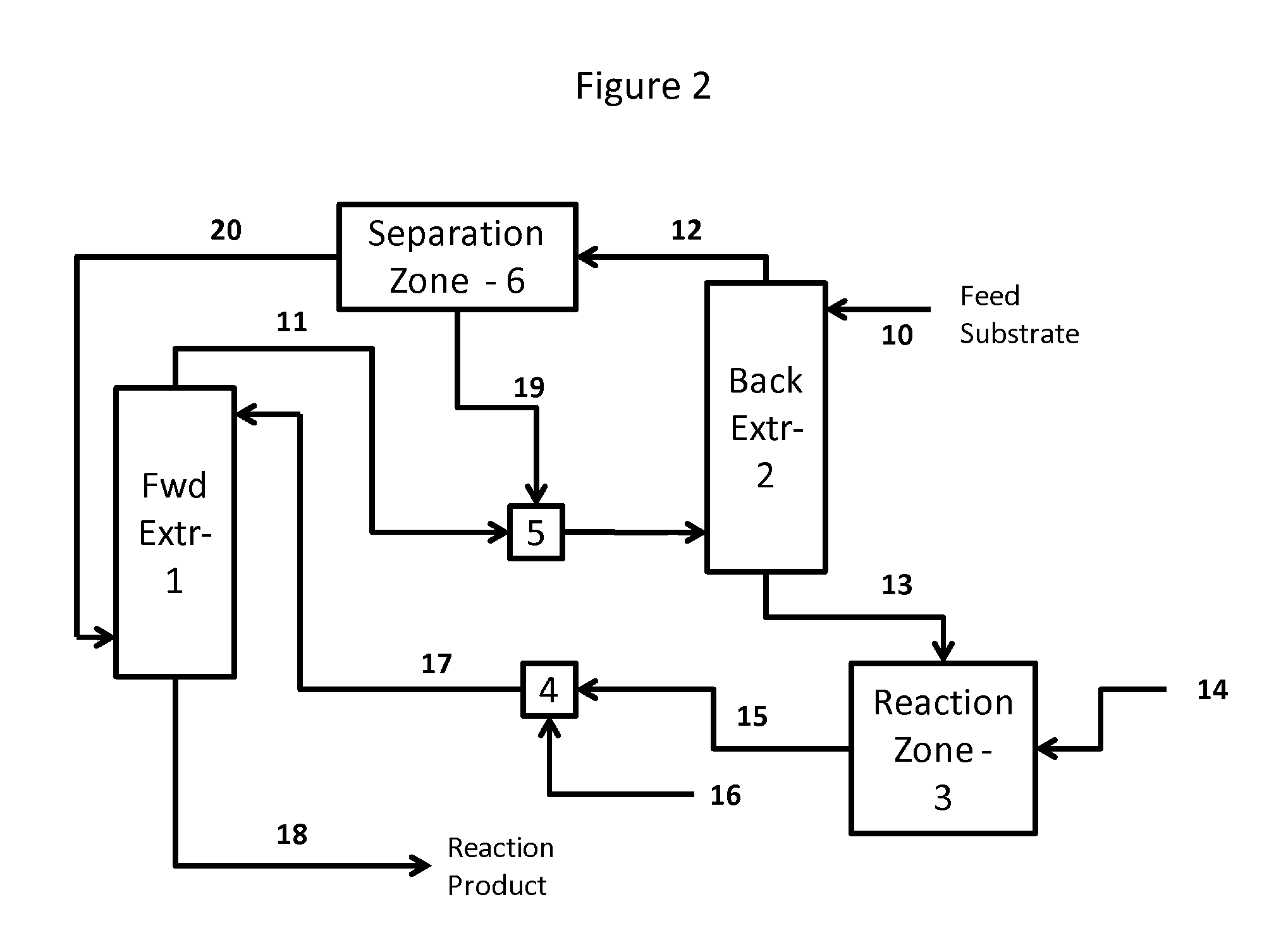Method for recovery and recycle of ruthenium homogeneous catalysts
a technology of ruthenium homogeneous catalysts and recycling methods, which is applied in the direction of organic-compound/hydride/coordination complex catalysts, physical/chemical process catalysts, bulk chemical production, etc., can solve the problems of limiting the amount of water that can be added to the extractor, reducing the efficiency and high cost of the catalyst recovery system
- Summary
- Abstract
- Description
- Claims
- Application Information
AI Technical Summary
Benefits of technology
Problems solved by technology
Method used
Image
Examples
example 1
[0309]This example illustrates the effect of different hydrophobic solvent compositions on the forward and back extraction of the ruthenium catalyst complexes and ethylene glycol. In Experiments 1-1 to 1-11, water was added to Feed 2 (F-2) to give a water content of 30 weight percent. The resulting mixtures were contacted with a hydrophobic solvent mixture in the composition and S / F ratio specified in Table 2A. Each mixture was held at 60° C., allowed to separate into two clear phases. An identical procedure was repeated for Experiments 1-12 to 1-22, using Feed 1 (F-1). The resulting partition coefficients and selectivities are summarized in Table 2A.
[0310]An identical procedure was repeated for Experiment 1-23, except using Feed 4 (F-4), diluted to comprise 37 weight percent water. The resulting partition coefficients and selectivities are summarized in Table 2A.
[0311]A portion of the top phase, the extract, of each extraction Experiment 1-1 to 1-22, Experiments 1-24 to 1-45, respe...
example 2
[0312]This example illustrates the effect of water content in the glycolic acid hydrogenation effluent feed mix and the effect of hydrocarbon content of the extractant on extraction of the BuO-triphos-Ru catalyst, ethylene glycol, 1,2-butanediol (BDO), and 1,2-propanediol (PDO). In Experiments 2-1 to 2-20, water was added to Feed 1 (F-1) to give the water content specified in Table 3. In addition, 1 weight percent (on an undiluted reactor effluent basis) each of BDO and PDO was added to Feed 1 (F-1). The resulting mixtures were contacted with a solvent mixture comprising 2-ethylhexanol and heptane in the composition and S / F ratio specified in Table 3. Each mixture was held at 60° C., allowed to separate into two clear phases. The ruthenium, phosphine, ethylene glycol, 1,2-propanediol, and 1,2-butanediol partition coefficients (abbreviated as P(Ru), P(Phos), P(EG), P(PD0), and P(BDO)) are summarized in Table 3.
TABLE 3Extraction of F-1 with 2-EH and HeptaneS / FWt % Water inWt % Heptane...
example 3
[0313]This example illustrates the effect of water content in the glycolic acid hydrogenation effluent feed mix and the effect of hydrocarbon content of the extractant on extraction of the Triphos-Ru catalyst, ethylene glycol, 1,2-butanediol (BDO), and 1,2-propanediol (PDO). In Experiments 3-1 to 3-20, water was added to Feed 2 (F-2) to give the water content specified in Table 4A. In addition, 1 weight percent (on an undiluted reactor effluent basis) each of BDO and PDO was added to Feed 2 (F-2). The resulting mixtures were contacted with a solvent mixture comprising 2-ethylhexanol and heptane in the composition and S / F ratio specified in Table 4A. Each mixture was held at 60° C. and allowed to separate into two clear phases. The ruthenium, phosphine, ethylene glycol, 1,2-propanediol, and 1,2-butanediol partition coefficients (abbreviated as P(Ru), P(Phos), P(EG), P(PD0), and P(BDO)) are summarized in Table 4A.
[0314]The above procedure was repeated with Feed 4 (F-4), with the Triph...
PUM
| Property | Measurement | Unit |
|---|---|---|
| weight percent | aaaaa | aaaaa |
| weight percent | aaaaa | aaaaa |
| weight percent | aaaaa | aaaaa |
Abstract
Description
Claims
Application Information
 Login to View More
Login to View More - R&D
- Intellectual Property
- Life Sciences
- Materials
- Tech Scout
- Unparalleled Data Quality
- Higher Quality Content
- 60% Fewer Hallucinations
Browse by: Latest US Patents, China's latest patents, Technical Efficacy Thesaurus, Application Domain, Technology Topic, Popular Technical Reports.
© 2025 PatSnap. All rights reserved.Legal|Privacy policy|Modern Slavery Act Transparency Statement|Sitemap|About US| Contact US: help@patsnap.com



